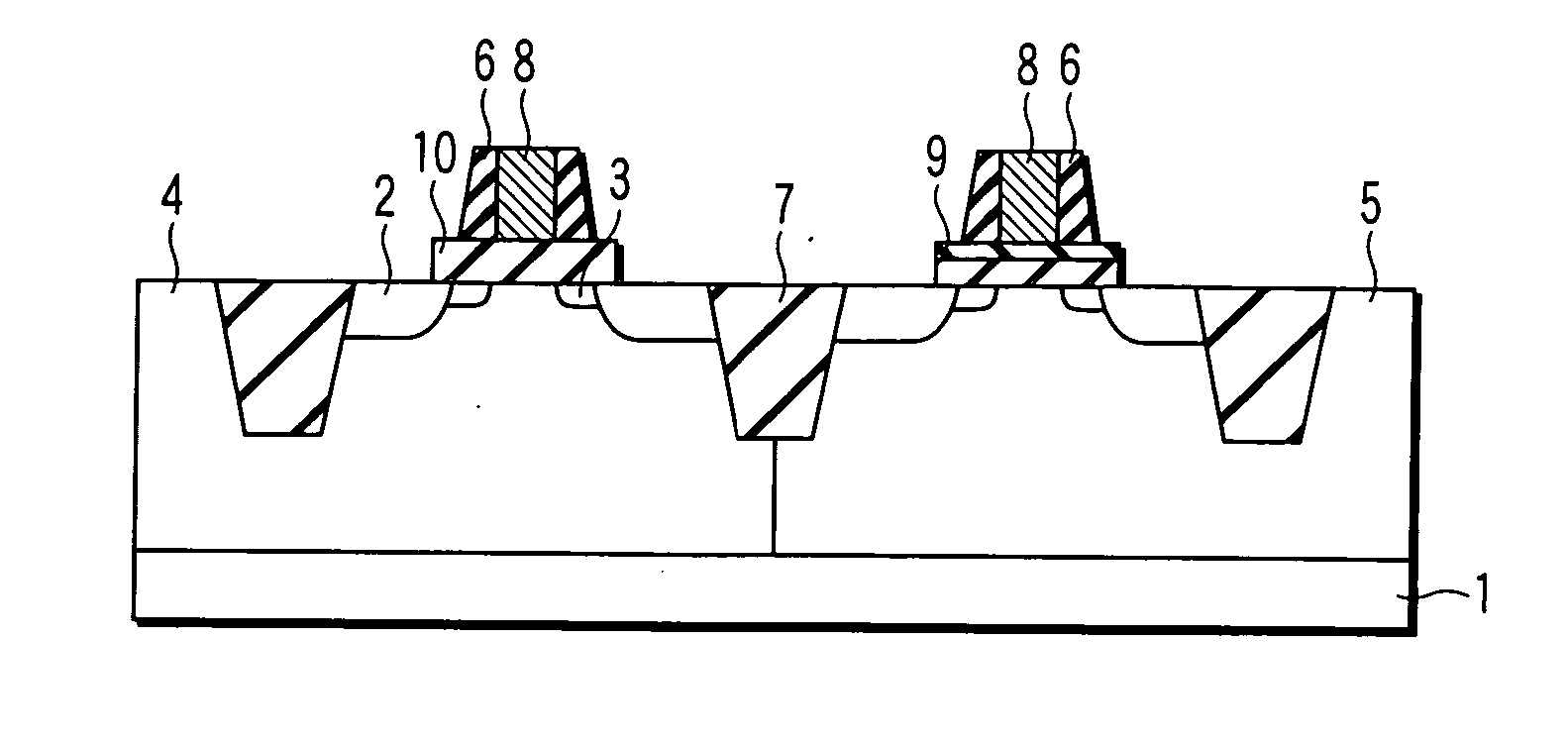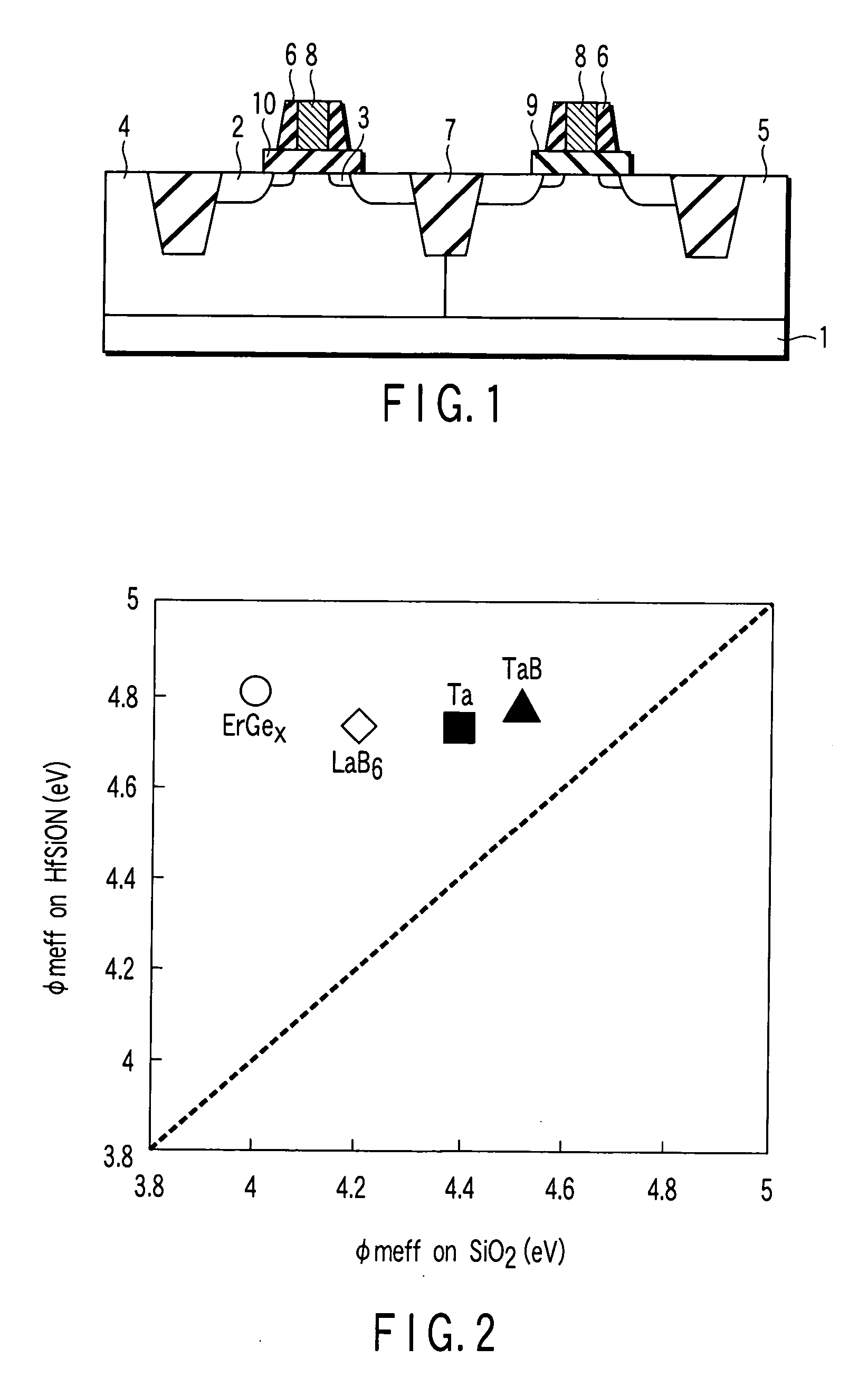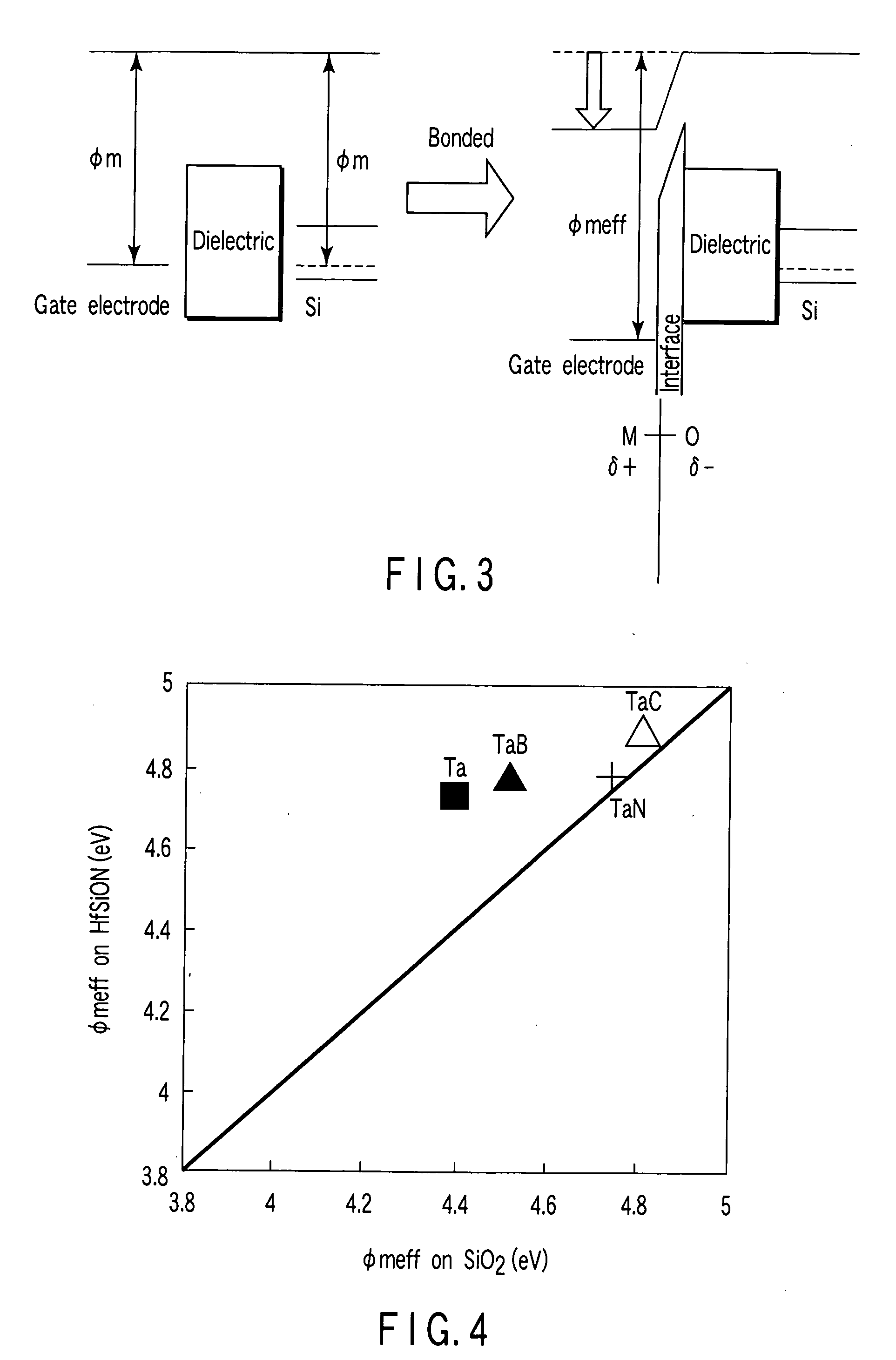Semiconductor device
a semiconductor device and semiconductor technology, applied in the direction of semiconductor devices, electrical devices, transistors, etc., can solve the problems of complex manufacturing process, no longer achieved performance improvement, and serious problems in capacitance reduction, etc., and achieve the effect of effective work function
- Summary
- Abstract
- Description
- Claims
- Application Information
AI Technical Summary
Benefits of technology
Problems solved by technology
Method used
Image
Examples
first embodiment
[0036]FIG. 1 is a sectional view of a semiconductor device according to a first embodiment of the present invention. In a surface region of an Si substrate as a semiconductor substrate, there are provided an n-type semiconductor region 4 and a p-type semiconductor region 5, and a pMISFET and an nMISFET are formed in the respective regions. The n-type, p-type semiconductor regions 4, 5 are formed as so-called wells.
[0037] On a surface of the n-type semiconductor region 4, a gate dielectric (insulating film) is formed which is made of an oxide 10 containing a metal atom having lower binding energy to combine with a metal atom of a gate electrode 8 than Al, Si and Ge. The metal atoms are, for example, Zr, Hf, Ti, Ta, Nb, V, Sc, Y, and a lanthanoide and actinide series.
[0038] On a surface of the p-type semiconductor region 5, a dielectric 9 different from the gate dielectric 10 is formed which includes any one of Al, Si and Ge having high binding energy to combine with the metal atoms...
second embodiment
[0069]FIG. 7 is a sectional view of a semiconductor device according to a second embodiment of the present invention. FIG. 8 is a schematic enlarged sectional view of an Si substrate, a gate dielectric and a gate electrode of a pMISFET in the semiconductor device of FIG. 7. A gate dielectric made of an oxide 10 is formed on an n-type Si substrate 4. A gate electrode 8 is formed on the gate dielectric 10. Although not shown, a refractory metal such as W or the like may further be formed on the gate electrode 8.
[0070]FIG. 9 is a schematic enlarged sectional view of an Si substrate, a gate dielectric and a gate electrode of an nMISFET in the semiconductor device of FIG. 7. A gate dielectric is formed on a p-type Si substrate. The second embodiment is different from the first embodiment in that the gate dielectric has a laminated structure, and a lower layer thereof includes the oxide 10 on which a dielectric 9 different from the lower layer is formed, as understood from FIG. 9. Other ...
third embodiment
[0080]FIG. 14 is a sectional view of a semiconductor device according to a third embodiment of the present invention. FIG. 15 is a schematic enlarged sectional view of an Si substrate, a gate dielectric and a gate electrode of a pMISFET in the semiconductor device of FIG. 14. A gate dielectric is formed on an n-type semiconductor region 4. The gate dielectric has a laminated structure, and a lower layer thereof is a dielectric 9. A dielectric 10 different from the lower layer is formed on the dielectric 9, and this is different from the first embodiment.
[0081] As described in the first embodiment, since a difference in the effective work function is caused by a dipole formed at an interface between the gate electrode and the gate dielectric, a thickness of the gate dielectric 10 is not limited, and the dielectric 10 may be any dielectric as long as it is one or more monolayers between the metal electrode and the oxide film 10. The gate dielectric 10 needs to be as thin as possible ...
PUM
 Login to View More
Login to View More Abstract
Description
Claims
Application Information
 Login to View More
Login to View More - R&D
- Intellectual Property
- Life Sciences
- Materials
- Tech Scout
- Unparalleled Data Quality
- Higher Quality Content
- 60% Fewer Hallucinations
Browse by: Latest US Patents, China's latest patents, Technical Efficacy Thesaurus, Application Domain, Technology Topic, Popular Technical Reports.
© 2025 PatSnap. All rights reserved.Legal|Privacy policy|Modern Slavery Act Transparency Statement|Sitemap|About US| Contact US: help@patsnap.com



